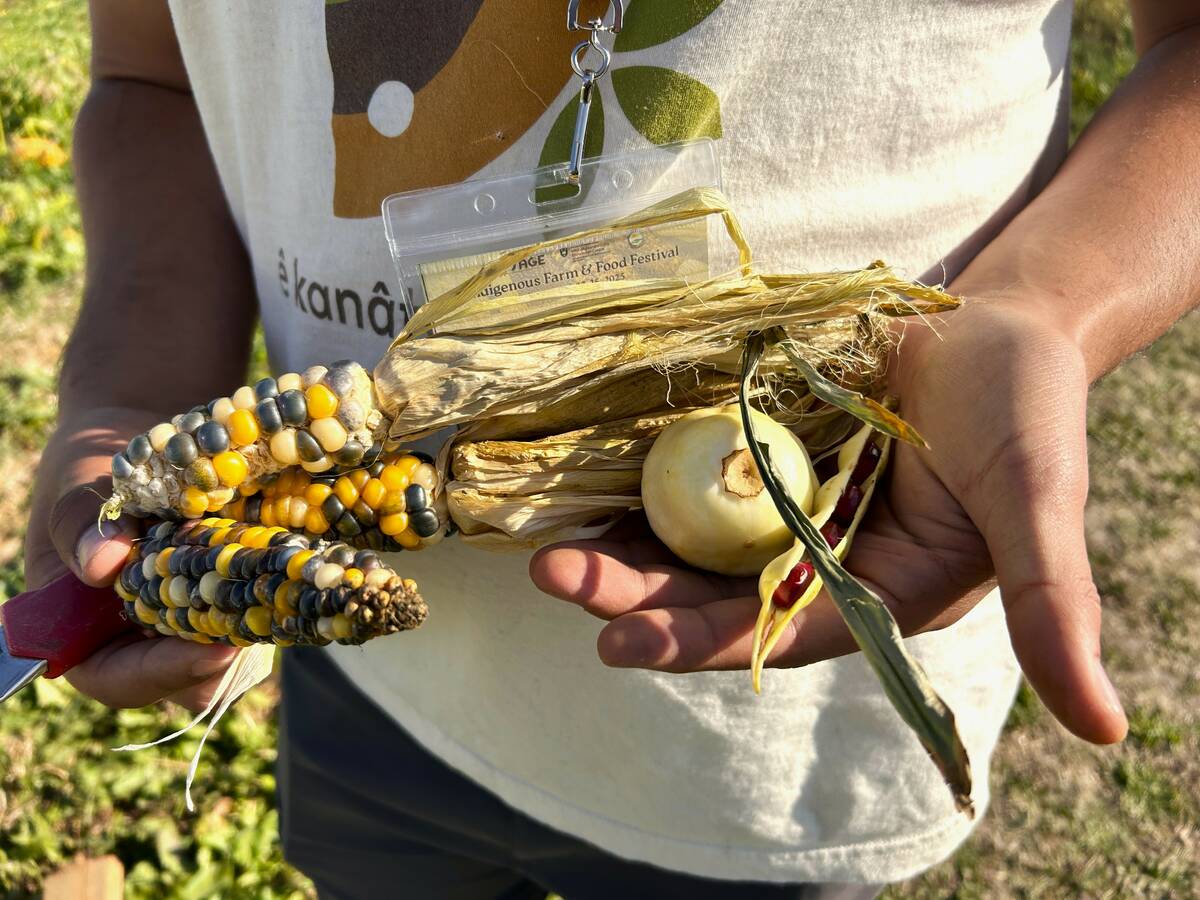Manitoba-made, value-added, hulless barley food product offers ease of preparation, convenience and nutritional benefits
Everybody has to eat.
On dinner plates around the world, there are three main types of starches: rice, potatoes and pasta.
Now, after years of product development, Marvin Nakonechny, the CEO of Edmonton-based Progressive Foods, has an ambitious plan to add his company’s new, fast-cooking hulless barley product to that list.
“I just want a small percentage of the starch market,” said Nakonechny. “If you shoot for the stars and hit the moon – that’s the kind of marketing focus we are doing.”
Read Also

Regenerative practices meet Indigenous knowledge on the Prairies
What do traditional Indigenous agricultural practices and regenerative agriculture have in common? Quite a lot it turns out.
The former seed grower from Wetaskwin, first came up with the idea in 2003 of making barley, an ancient grain that has been around for 8,000 years, more palatable for modern consumers.
As a director on the research committee for the Alberta Barley Commission, he worked on strategies for developing new markets such as hog feed, dairy silage and other applications.
But the holy grail of that research was the food market, because it alone offered the breathtaking possibility of boosting barley’s value from $4.75 per bushel to $5 per pound.
“Everybody was trying to get the concept of barley as a food because food is your highest-value application,” said Nakonechny.
New barley needed
In tapping that market, a new kind of barley had to be developed, because malting barley, with its lower soluble fibre and lower protein, didn’t quite fit the bill in terms of the nutritional qualities that would lure consumers.
“On the food side, we want soluble fibre and we want protein,” he said.
Hulless barley, which has a recessive gene that prevents the hard, fibrous outer shell around the seed from fully developing, had been around for over 20 years. However, developing yield and agronomic qualities took some time.
The next step was developing a processing technique for speeding up and making the home-cooking process foolproof, much as has been done for converted rice. Pearled and pot barley, he noted, have been around for a long time, but they are tricky to get right and take up to 40 minutes to prepare. Also, QC barley is porous, and therefore absorbs flavours better.
“Barley is a very delicate grain to work with. If you make it quick, you can easily end up with mush,” he said.
The nutritional qualities of hulless QC barley are in a “class all by itself,” he added. Ranging from 13-16 per cent protein, it is superior to all other grains except kamut at 19 per cent.
The real advantage, however, is in its high soluble fibre, which contains beta glucans that fight cholesterol and help to regulate blood sugar levels. At three to 11 per cent soluble fibre, barley tops oats at three to seven per cent.
With any value-added new product, pressure from competitors eventually forces price premiums back down to the commodity level.
Don’t look for it in a bin at the Bulk Barn, because Nakonechny hopes to avoid that inevitability for as long as possible, and right now is targeting adventurous, health-conscious consumers eager to try new products.
“The most adventurous ones are those looking for health solutions,” he said. “Traditional shoppers are looking for value and what they already know.”
The quick-cooking process was first developed via a laboratory research project undertaken at Alberta’s Centre for Agricultural and Industrial Technology in 2003.
Patented design
A patent was secured by Progressive Foods, and then in 2009, the company enlisted the help of the “highly skilled and motivated” labour force at Cascade Colony, near MacGregor, to produce QC barley on a commercial scale.
The custom-designed facility with a current capacity of 300 tonnes per year buffs the grain to remove outside “skin,” cooks it in large tubs, then dries on a conveyor belt.
Progressive Foods operates a complete value chain system, from contracting barley production across the Prairies, to distribution and marketing.
Currently, QC barley is made from Falcon, a semi-dwarf, hulless variety, which yields about 80 per cent of malting barley.
The company prefers to have the grain grown on potato stubble, which avoids barley disease cycles and offers high residual fertility. Yields as high as 120 bushels to the acre have been seen under this production system, he said.
A crop grown last year by Springhill Colony was of such high quality that the company bought several years’ supply, he added.
The product is currently available in 500-gram bags at some Sobeys and Save-on-Foods outlets in Alberta, as well as the Two Farm Kids store in Brandon. A range of recipes, from soup, risotto, tabouleh salad and pilaf have been specially developed for QC barley, and the product is featured on the menus of a number of Alberta restaurants.














